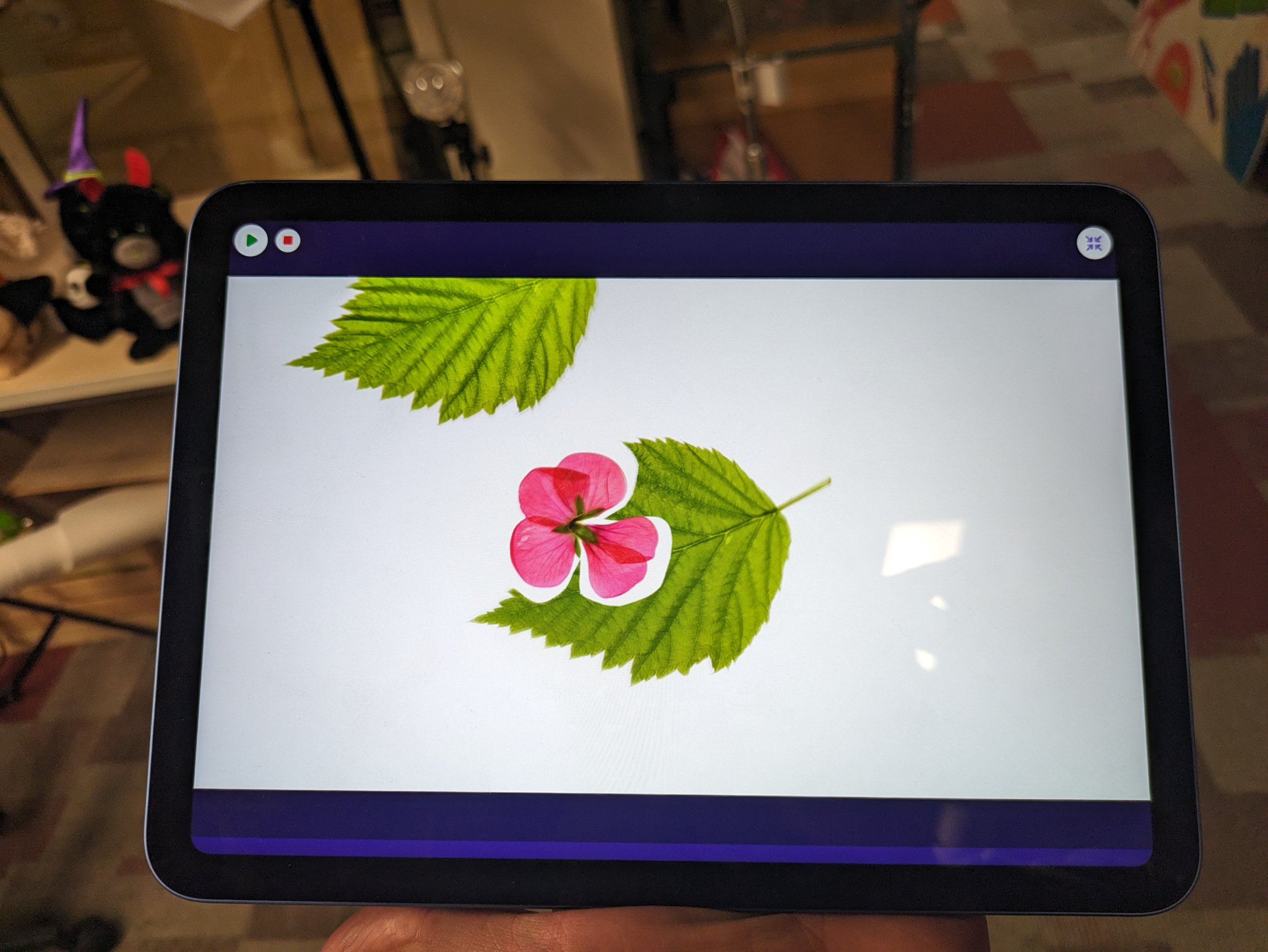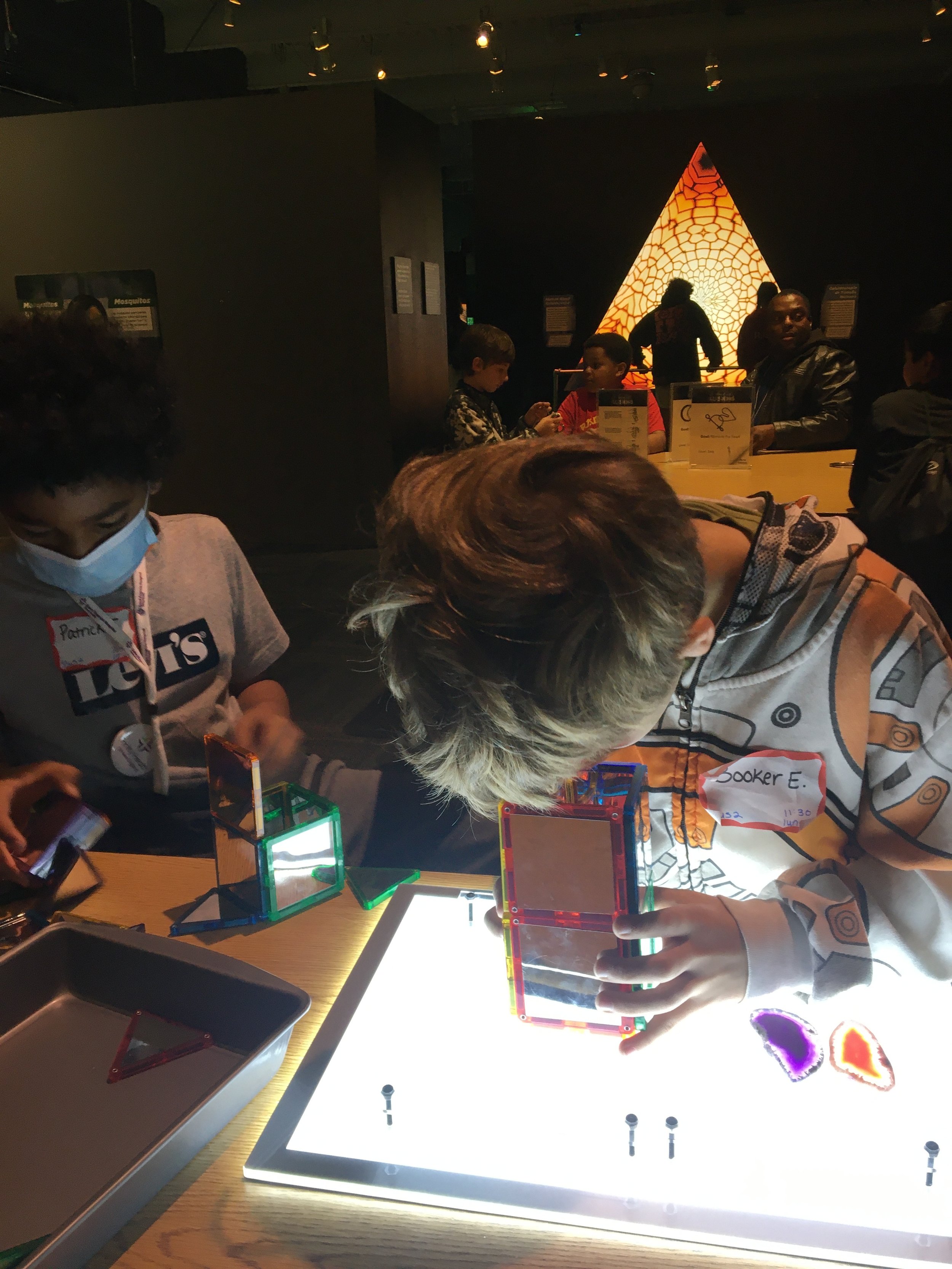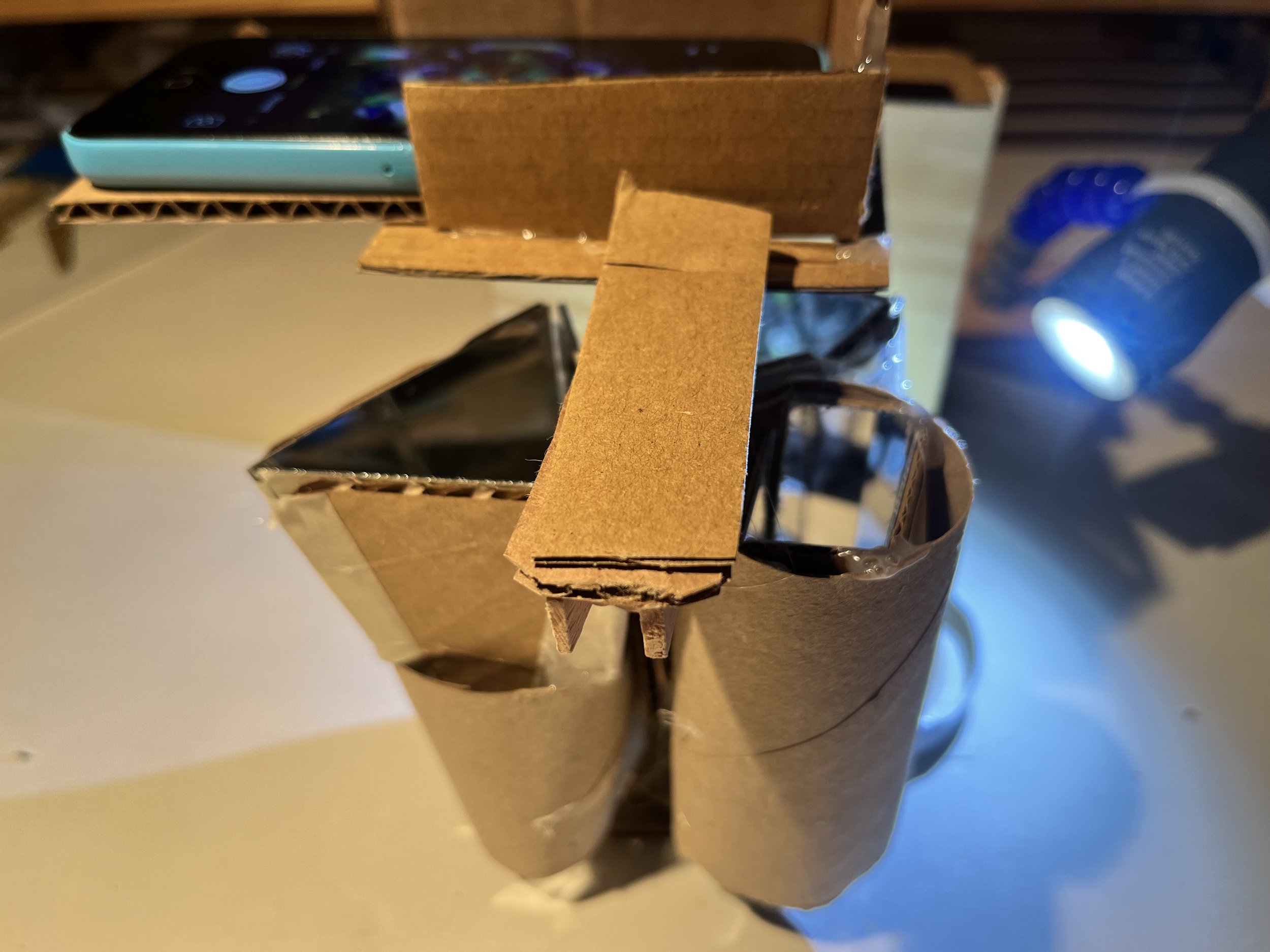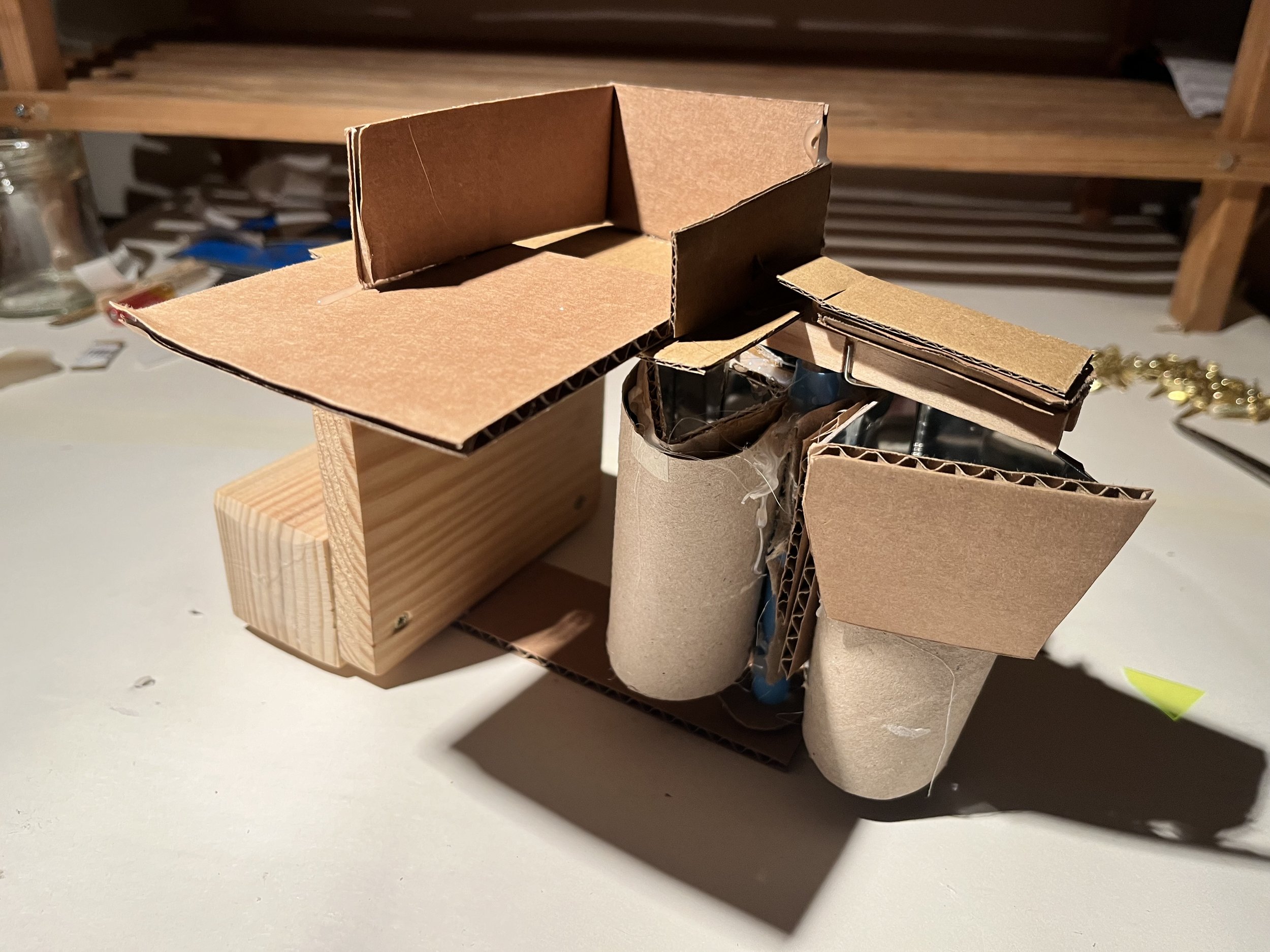Going Deeper with Cardboard Kaleidoscopes
Winter is coming. Time for a pumpkin spice latte, holiday tunes playing in the background, and experiments with cardboard, mirrors and motors…
Well, maybe it’s a bit non-traditional, but the tinkering inventive playset group of the LEGO playful museum network have been prototyping a bunch of cool kaleidoscope experiments over the last weeks. I wanted to share a few of our recent inspirations and explorations.
One of my best sources of ideas about kaleidoscopes is a fun book by Gary Newlin called Simple Kaleidoscopes. There’s a lot of ideas for projects and some explanations about how the different arrangements of mirrors can produce a wide range of effects.
Additionally, network partners from the Exploratorium, Connecticut Science Center and Discovery Place have been sharing new ideas and explorations. I was excited about the Tinkering Studio’s Octo Studio pattern explorations because it’s a low threshold way to add digital tools into the kaleidoscope experiments. Nick from CSC had a great idea to hack Magna-Tiles by covering them with mirrored cardstock to make it easier to do quick prototypes of different arrangements.
I wanted to continue with the cardboard kaleidoscope explorations that I have been working on over the last few years, especially with the Lighthouse Making the Future grant and at the Inter:aktion conference in Heilbronn. The experiments revolve around a kit of parts that includes cardboard tubes, mirrored cardstock, phones/digital cameras to capture images and other materials like lenses that produced interesting effects.
I’d like to find ways that learners can easily tinker with both the process of designing the kaleidoscope and experimenting with different objects and mechanisms that make interesting patterns. The phone and camera are ways to broaden the experience and share discoveries either though posting photos of designs or projecting the process on a central location in the space.
The first experiment added in a slow moving motor and a small posable light (both made for the light play set a couple weeks ago). The addition of a motor makes for really beautiful and surprising patterns that appear and disappear as the disc rotates under the tube.
I tried another experiment with a device that allows learners to quickly switch between completely different mirror angle arrangements. There’s a rotatable piece with three different toilet paper tube kaleidoscopes attaches. The same collection of objects can look very different through a rectangle, triangle or tapered kaleidoscope.
This is just a proof of concept and eventually would be made more sturdy or on a larger scale. It would be really cool if learners could snap their own kaleidoscopes in place underneath the camera.
One more experiment that I tried out was making a device that combined the motorized kaleidoscope with the ability to easily slide one of the mirrors and change the angle of the reflection. I made a hinged mirrored pair and glued one side to the wall of a cardboard box. I then glued a skewer stick to the other side and threaded it through a slot in the front of the box. As you move the slider, you can make the angle wider or narrower which creates really interesting effects on the kaleidoscopic image.
At this point the theme for kaleidoscope tinkering is still an open sandbox with many possibilities. Over the next weeks and months our team will share more in-progress ideas with each other, talk through possibilities and decide which directions will be most fruitful to develop further and test with museum visitors.
The LEGO Playful Learning Museum Network initiative is made possible through generous support from the LEGO Group.








